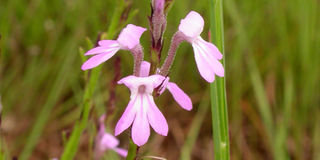Prime
Striga weed, the African farmer’s enemy

This weed can stay dormant in the ground for 10 years but once it starts to grow, it causes huge losses for the cereal crop farmer.
Farmers specialising in growing cereal crops in Uganda and other parts of Africa have of late suffered low yields as a result of the striga weed invading their gardens.
In Uganda the weed has mostly hit farmers growing cereal crops in eastern and northern Uganda. Striga weed according to crop science experts is a parasitic weed that grows in farmers’ fields where cereal crops such as maize, millet, sorghum and rice are grown.
It is a weed that attaches its roots to the roots of a cereal crop for purposes of obtaining food thereby causing stunted growth to the plant.
According to Dr Michael Otim a crop entomologist at the National Crops Resources Research Institute (Nacrri) in Namulonge, in Uganda, the striga weed tends to attack maize, millet and sorghum crops. The weed has also been reported in western Kenya, Southern Sudan, Tanzania, Nigeria, Rwanda as well as South Africa especially in maize fields.
Dr Otim said there are two types of striga which include Striga hermonthika with purplish flowers commonly found in northern Uganda and striga Asiatica which has yellow flowers commonly found in eastern Uganda. In as far as the East African regions is concerned, three major striga zones have been identified and these include the Lake Victoria zone, the inland dry zone found in Tanzania, the inland moist zone found in Uganda and a conterminous coastal zone found adjacent to the Indian ocean in both Kenya and Tanzania.
The most affected zone is the Lake Victoria zone with the largest extent of slightly over 850,000 hectares. The weed is said to cause 50 per cent to 80 per cent crop loss in the entire region. Tanzania has the largest area of striga infestation totalling over one million hectares of land.
Uganda has 262,000 ha of striga infestation. A large portion of Uganda’s striga plagued areas are located away from Lake Victoria, near the Kenyan border and the country reports that 31.9 per cent of its maize is under infestation.
Tanzania has the largest share of its maize acreage under striga attack, with 36.9 per cent of its three million maize acres affected mostly in Terima and Serengeti district.
Kenya has 216,000 hectares of striga hit cropland, with most of it found near Lake Victoria.
Therefore, across East Africa, the economic impacts are substantial, totalling over $568m a year.
Dr Otim says the weed produces up to 50,000 seeds which can remain dormant in the soil for 10 years and it grows mostly in less fertile soil, the reason why farmers’ fields are being attacked by the weed these days, yet it has been in existence for over 100 years.
He adds that when farmers in eastern Uganda expressed concern over the weed, a team of science experts started the push pull technology where the Napier grass is planted on borders of the cereal crop field and the desmodium used for controlling maize stem borers in between the rows.
Crop scientists in Serere are also working on a sorghum variety that is resistant to the weed.
The head of the cereals crops research at Namulonge, Dr Godfrey Asea, said his team is working on a number of maize varieties that are resistant to the weed. This is because previously farmers were advised to uproot the weed once they site it in their gardens but because the weed has attractive flowers, many farmers thought it was not a dangerous weed.
The team has acquired a maize variety called Imazobil Resistant (IR) maize from International Maize and Wheat Improvement Centre, which is coated with herbicides to avoid attack on the plant
The herbicide kills the roots of the weed and increases the soil nutrient, thereby making it unfavourable for the weeds to grow. Scientists in Kenya have already come up with resistant varieties against the weed which they have released to farmers in Western Kenya.
The Agricultural inspector at the Ministry of Agriculture, Mr Isaac Wamasembe said as regulated by the ministry, when conducting their routine field work, they advise farmers to guard against the weed by leaving the land fallow for two to three years before planting a cereal crop for the second time on the same land.
The ministry also inspects seeds that are brought into the country to avoid incidences of some seeds being imported with mixed invasive weed seeds. Farmers are also advised to practice intercropping where cereals are planted with legumes.
Mr Moses Okello, a farmer hailing from Dabani village in Busia, says, “The weed has been wiping off our cereal crops because a garden where farmers could harvest one bag of maize, once infested with the weed, will yield half a bag of maize.”
He said most farmers know about the weed but could not devise a method of controlling until the push-pull technology was introduced.
He has however urged scientists to come up with another control method for their cassava crop where the weed is sometimes spotted because the above technology only works with cereal crops.




